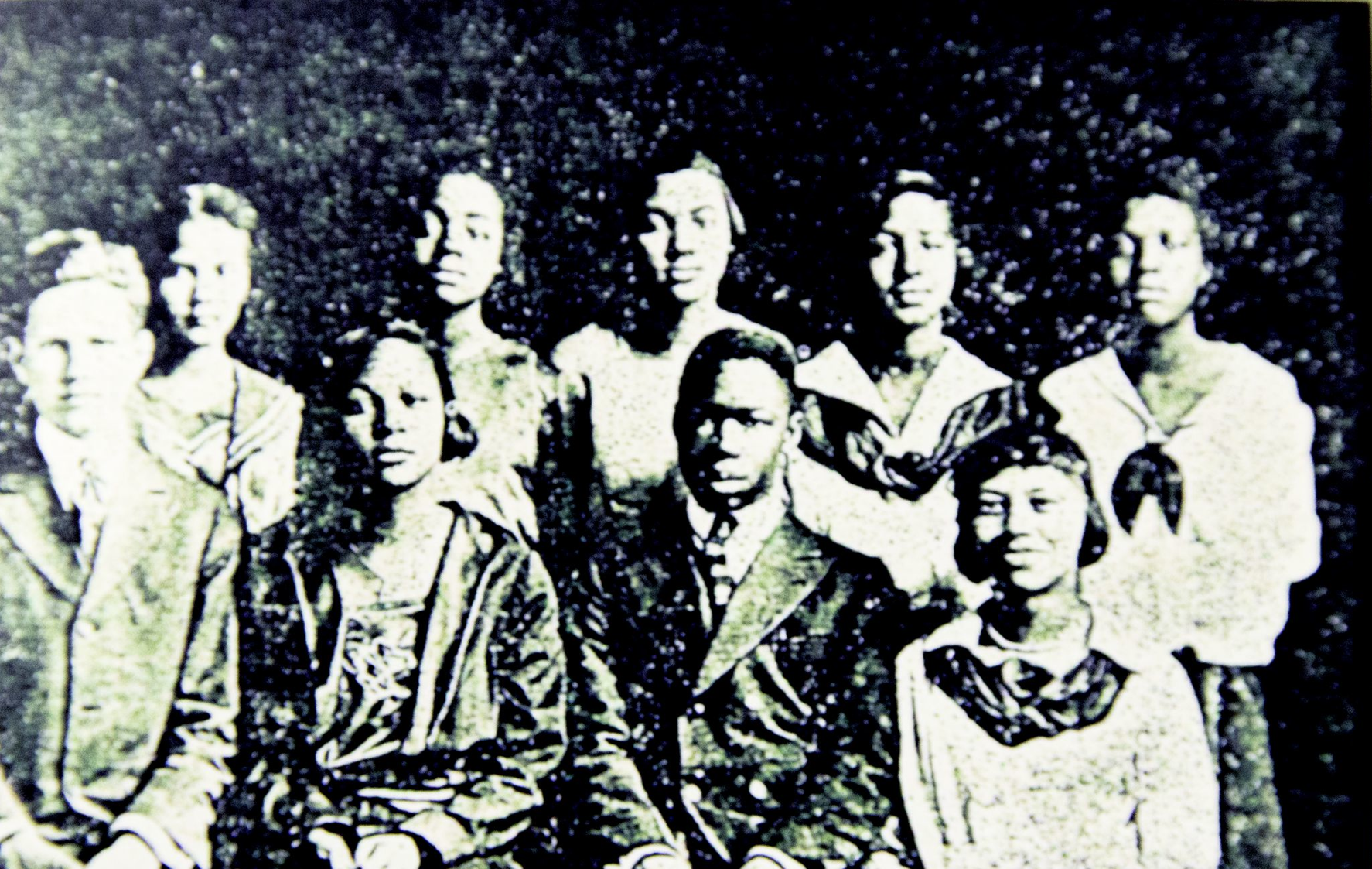This Car Up
“This Car Up” is dance film and art installation about the relationship between Sarah Page and David “Dick” Rowland and their interaction in the Drexel Building elevator, the catalyzing event of the 1921 Tulsa Race Massacre.
Roma Catania as Sarah Page and Kevyn Butler as David “Dick” Rowland in ‘This Car Up’ for the Greenwood Art Project.
It’s been suggested that Mr. Rowland stepped on Ms. Page’s toe, or that he tripped because the elevator didn’t stop level to the floor. Perhaps Rowland and Page were romantically involved (maybe she squealed, not screamed, because he proposed to her).
In the mix are questions about the politics of these two bodies together (White woman and Black man). America’s general paranoia around these two bodies in contact sparks outrage and catalyzes massacres. The combination is dangerous, precisely because of the White-male perspective that places White men as both owner and savior of marginalized bodies.
In the face of ambiguity about what happened in the elevator, Choreographer Ari Christopher sees a certainty about perception: “What is true for a person is heavily influenced by their position in society and the accompanying fears, resentments, and beliefs — crafted and delivered by our storytellers and meaning-makers.”
The installation was open to the public in the Atrium of One William’s Center (BOK Tower, downtown Tulsa) from May 26 - June 24, 2021, was presented at numerous dance film festivals around the country and is now available here as a virtual exhibit.
Please let us know you were here and leave a note for the artists.
Choreography & Concept: Ari Christopher, Director of Photography & Editor: Jessica Vokoun, Dancers: Kevyn Butler & Roma Catania , Video: John A. Ferrante Photography & Timothy J. Visuals , Music: “Eternal Slumber” by Adam Crossman (used with permission) , Prop Fabricator (on location display): Richard Zimmerman
Support from: Bloomberg Philanthropies, George Kaiser Family Foundation, Tulsa Community Foundation, CarePrecise Technology, City of Tulsa, Living Arts of Tulsa, Tulsa Race Massacre Centennial, University of Tulsa Costume Shop, and the Principals Circle of Tulsa Modern Movement
History and Context for “This Car Up”
Memorial Day, 1921 - Memorial Day, 1921 - While a parade wrapped up outside, an anonymous person called the police and reported that they heard Sarah Page scream and saw David “Dick” Rowland running away. David was arrested. The Tulsa Tribune published an inflammatory news story headlined “Nab negro for attacking girl in an elevator” and many believe the Tribune also published an editorial calling for David’s release and lynching. Armed White men gathered downtown to insist he be released to violent mob justice. Black men went downtown to protect David. A shot was fired when a White man tried to disarm a Black man. Despicable violence followed, lives and property were destroyed, whole neighborhoods were burned to the ground and, through a series of racist policies and choices by civic leadership, the Greenwood district lay in ruins for nearly 100 years.
Sarah Page
was a divorced 17 year-old from Kansas City, who moved to Tulsa and worked as an elevator operator in the Drexel Building while putting herself through business school.
David “Dick” Rowland
was a 19 year-old who had attended Booker T. Washington High School. David worked as a boot black and courier. He would have visited the Drexel Building frequently for work.
Sarah and David were probably at least familiar - working in the same building. Some accounts say they were romantically involved. They both disappeared in early June, after the massacre. David was released by police upon the written request of Sarah. An account from David’s mother in an early 1970’s interview says that they met up for a time in Kansas City after David was released, then went their separate ways. Historians have tried to track their movements in the years following the massacre, but there’s no definitive evidence to account for what happened to them.
Did David assault Sarah? (The official narrative in 1921)
Did David trip on the floor of the elevator car because it stopped uneven to the floor? (As it was known to do)
Were Sarah and David romantically involved or even just a bit too friendly in the eyes of co-workers?
Did Sarah scream in fear or surprise or did she squeal for joy?
Possibly most concerning is that the incident supposedly occurred on Memorial Day morning when the building was closed for holiday festivities, leading many to ask if either of them were even in the building that morning.
Who made the anonymous call to the police to report Sarah’s scream and blame David of assault?
Was there a published editorial calling to snatch David from jail for lynching?
These are all questions that historians have been trying to answer. We don’t have a definitive narrative. I don’t think we ever will.
What is compelling to me as an artist in this story is the nature of perception and the responsibility of our storytellers and meaning makers.



